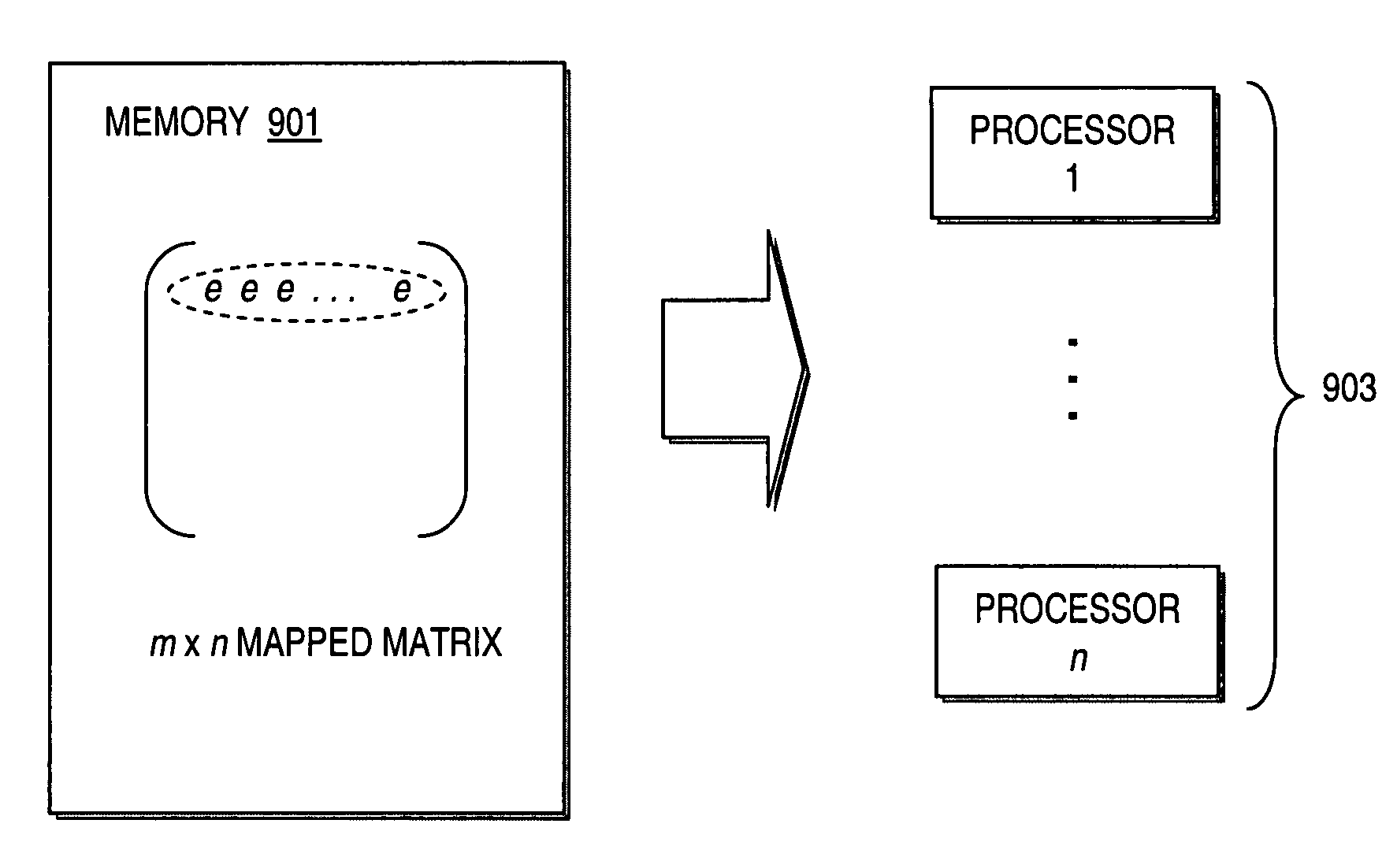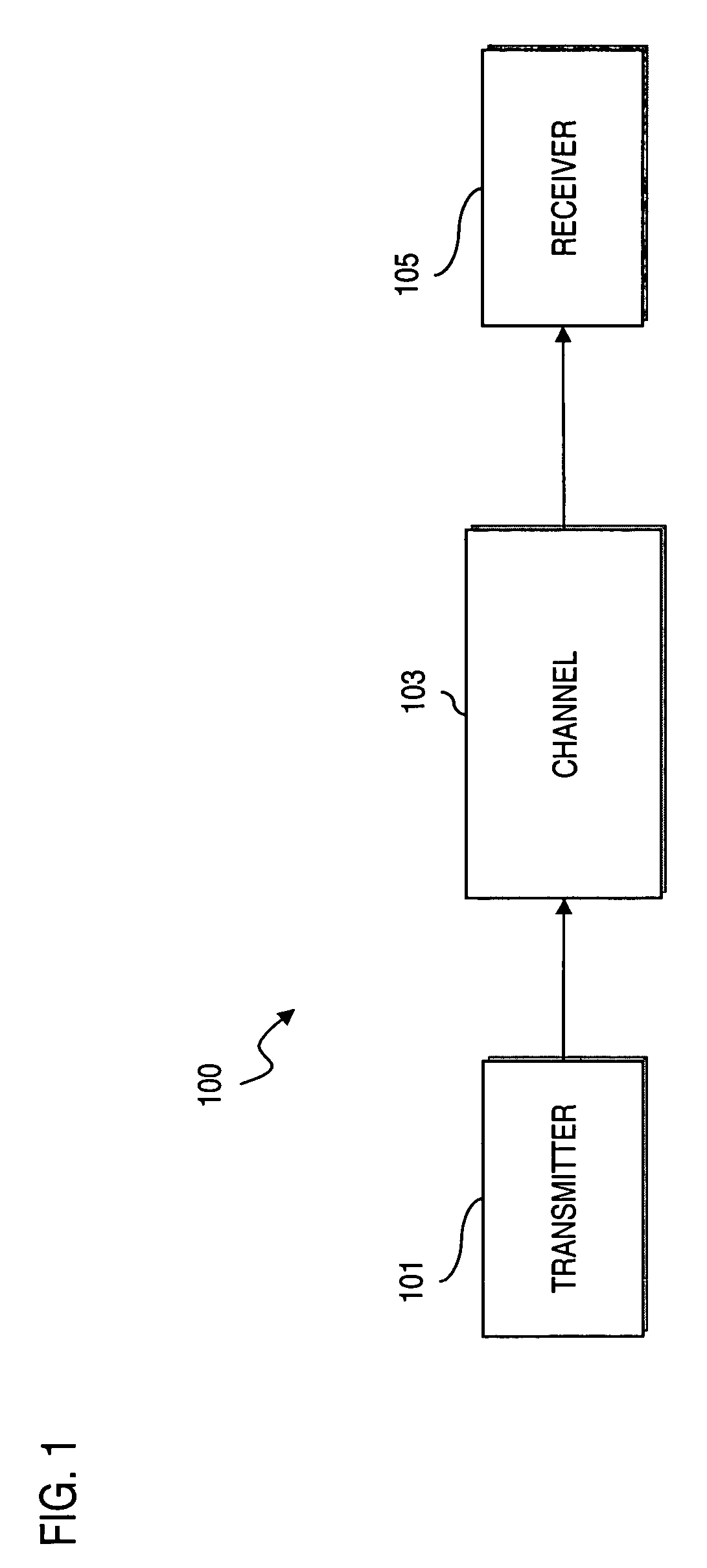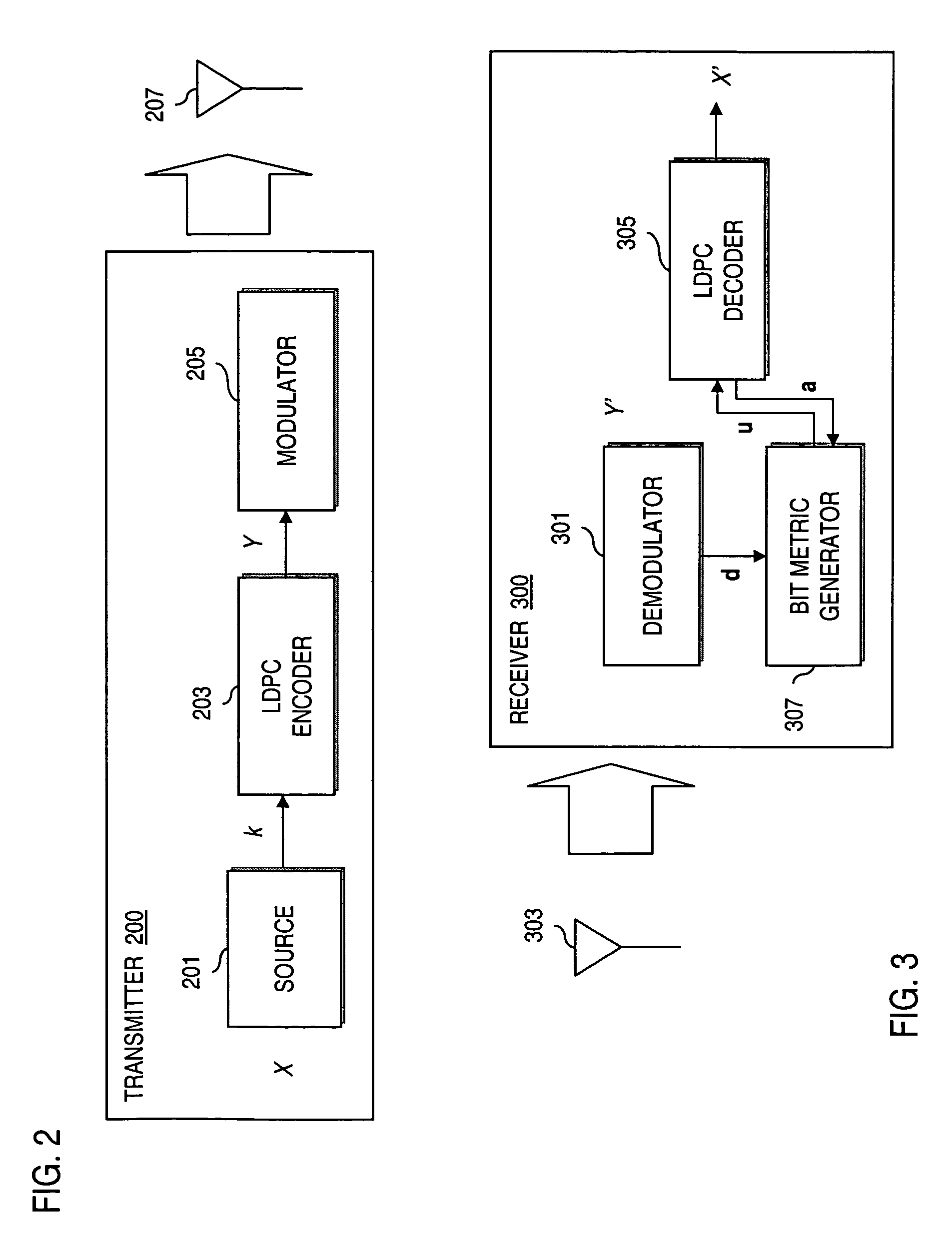Method and system for generating parallel decodable low density parity check (LDPC) codes
a low density parity and code technology, applied in the field of communication systems, can solve the problems of large blocks, low implementation efficiency, and low utilization rate of ldpc codes, and achieve the effect of enhancing flexibility in implementation and efficient memory architectur
- Summary
- Abstract
- Description
- Claims
- Application Information
AI Technical Summary
Benefits of technology
Problems solved by technology
Method used
Image
Examples
Embodiment Construction
[0027]A system, method, and software for efficiently decoding structured Low Density Parity Check (LDPC) codes are described. In the following description, for the purposes of explanation, numerous specific details are set forth in order to provide a thorough understanding of the present invention. It is apparent, however, to one skilled in the art that the present invention may be practiced without these specific details or with an equivalent arrangement. In other instances, well-known structures and devices are shown in block diagram form in order to avoid unnecessarily obscuring the present invention.
[0028]FIG. 1 is a diagram of a communications system configured to utilize Low Density Parity Check (LDPC) codes, according to an embodiment of the present invention. A digital communications system 100 includes a transmitter 101 that generates signal waveforms across a communication channel 103 to a receiver 105. In this discrete communications system 100, the transmitter 101 has a ...
PUM
 Login to View More
Login to View More Abstract
Description
Claims
Application Information
 Login to View More
Login to View More - R&D
- Intellectual Property
- Life Sciences
- Materials
- Tech Scout
- Unparalleled Data Quality
- Higher Quality Content
- 60% Fewer Hallucinations
Browse by: Latest US Patents, China's latest patents, Technical Efficacy Thesaurus, Application Domain, Technology Topic, Popular Technical Reports.
© 2025 PatSnap. All rights reserved.Legal|Privacy policy|Modern Slavery Act Transparency Statement|Sitemap|About US| Contact US: help@patsnap.com



